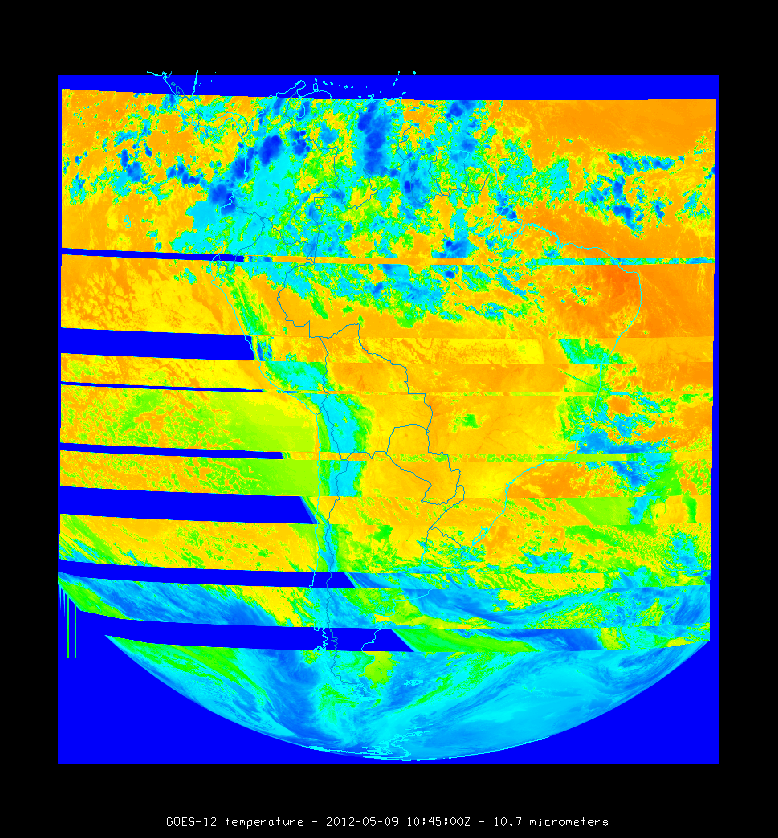GOES-12 Imager Cycle Slips
GOES-M was launched in 2001 and as GOES-12 served as the operational GOES-East satellite from April 1, 2003 until April 14th, 2010, and has been serving recently as GOES-South America, providing Weather Services on that Continent with routine Imager and Sounder data.
Recently, the GOES-12 Imager has been experiencing ‘cycle slips‘, which manifest themselves in imagery as lines that are shifted, as shown in the loop above of the 5 Imager channels (Individual channels are here: 0.65 µm, 3.9 µm, 6.5 µm, 10.7 µm, 13.3 µm). Cycle slips occur as the satellite on-board software loses track of where the image mirror used to view the Earth is in its scan cycle. After the scan system initializes at the start of a scan cycle, the system expects consistent behavior, and no resources are allocated to track which cycle the mirror is in. Only increments are tracked. If the mirror is moving and a hiccup occurs, that anomaly (which is manifest as a shift in the center of the line) continues until the next system initialization.
The reason for the uptick in the number of Cycle Slips is unknown.
The images in this blog entry were generated using McIDAS-V.
(Update, 4 June 2012: An Imager Electronics Side Swap is scheduled for June 6, 2012, for GOES-12 (GOES-South America) based on the Manufacturer’s Recommendation as a potential remedy to mitigate the ongoing Cycle Slips. The side switch will be performed at 1615 UTC on 6 June 2012. The duplicate sensors that will now be used have not yet been used during GOES-12’s life. Because new sensors are being used, new look-up tables and calibration coefficients have been computed and are available here. Also, see page 29 in this pdf for more information on the two detector sets. Here is the notification of coming changes.)


